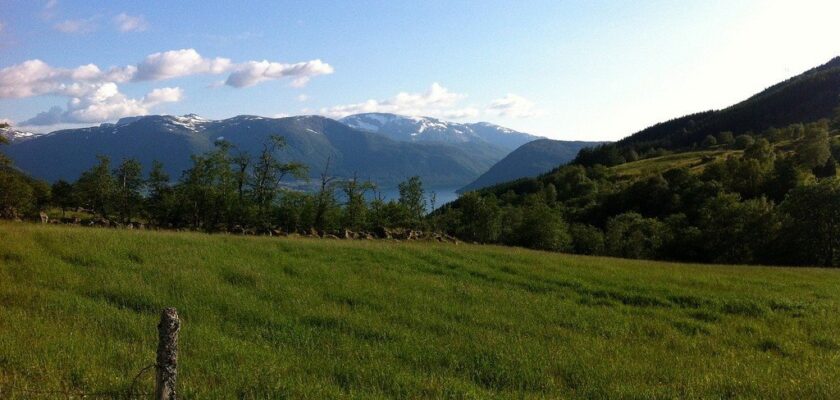Hardangerfjorden
Hardanger Fjord is the world’s third longest fjord, located in southwestern Norway, surrounded by high and rocky mountains from which many waterfalls descend. Hardanger Fjord is made up of many smaller fjords, the most famous being Kvinnherads, Granvin, Sør, Eid and Osa.
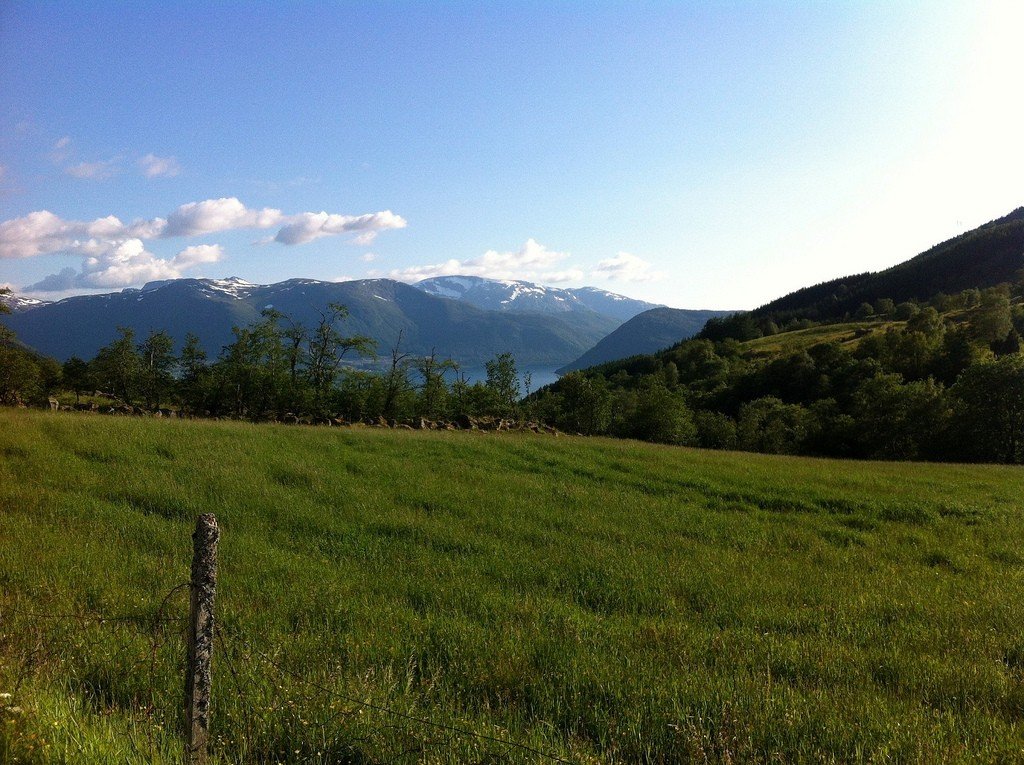
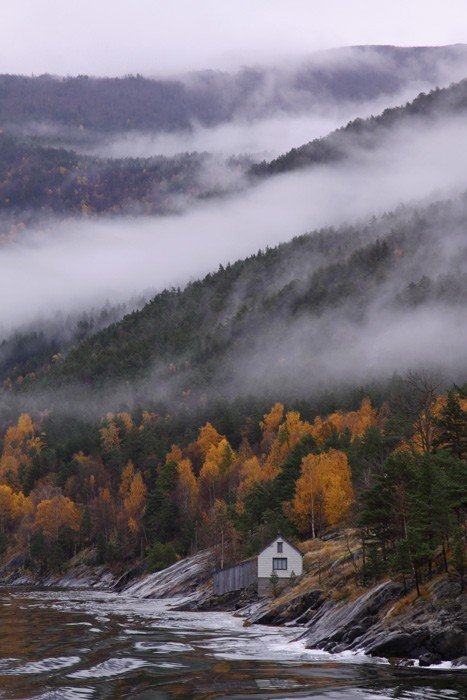
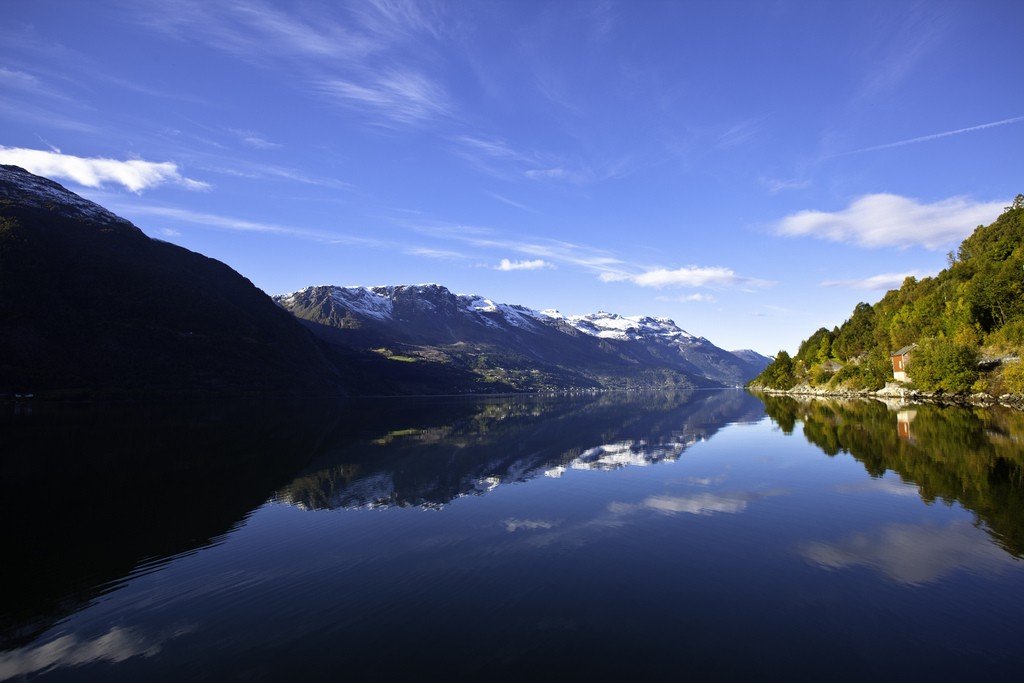
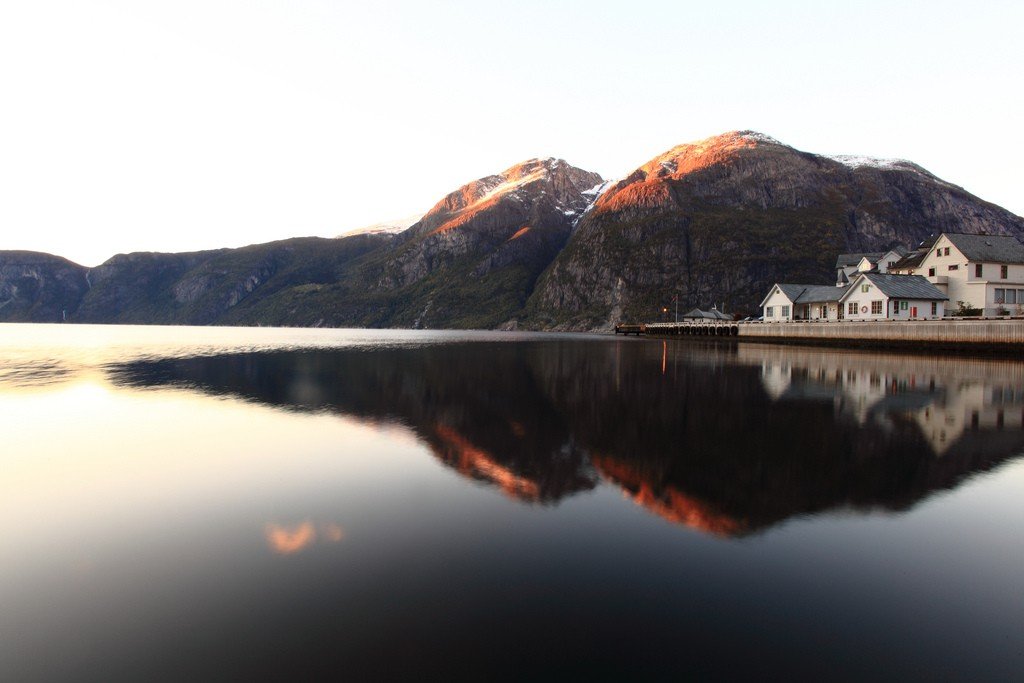
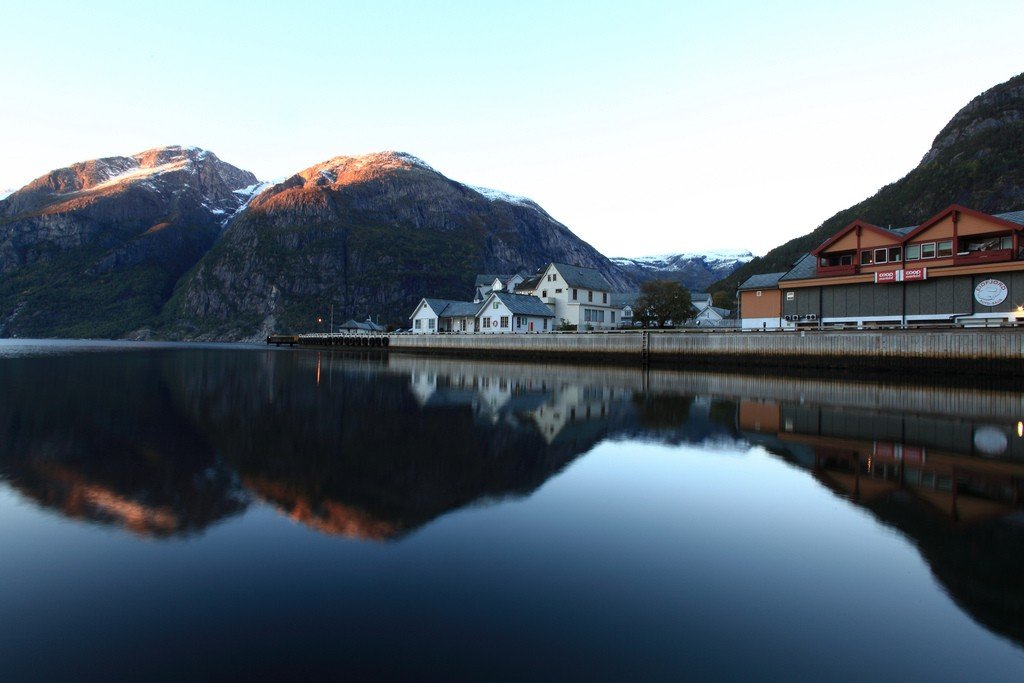
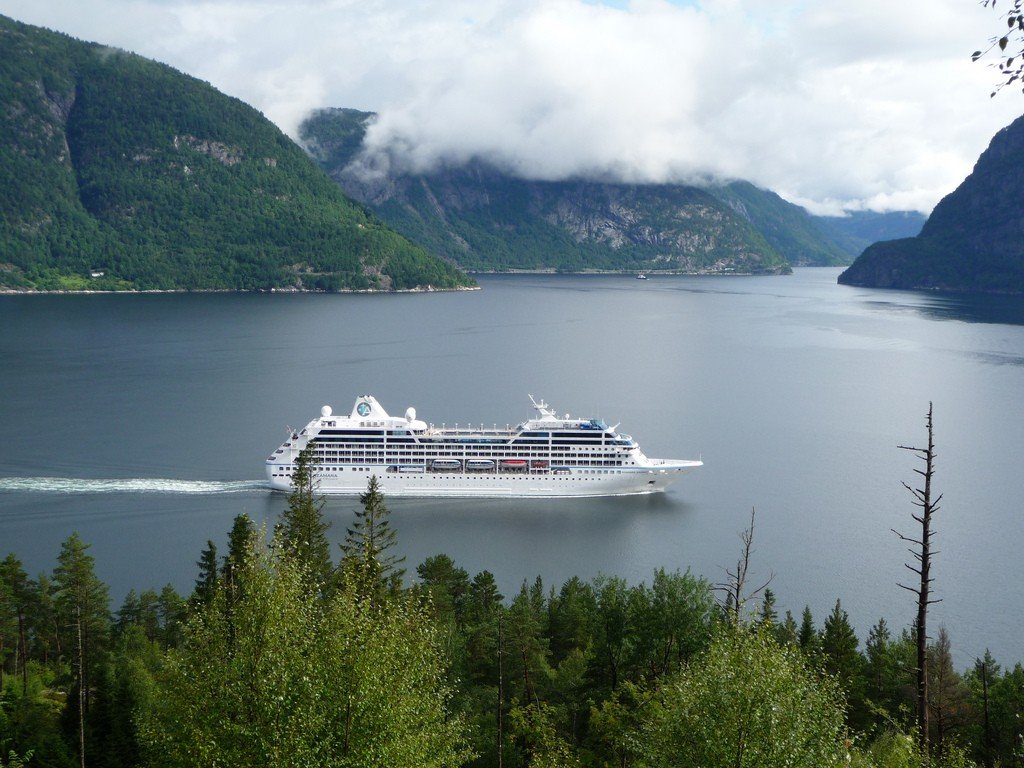
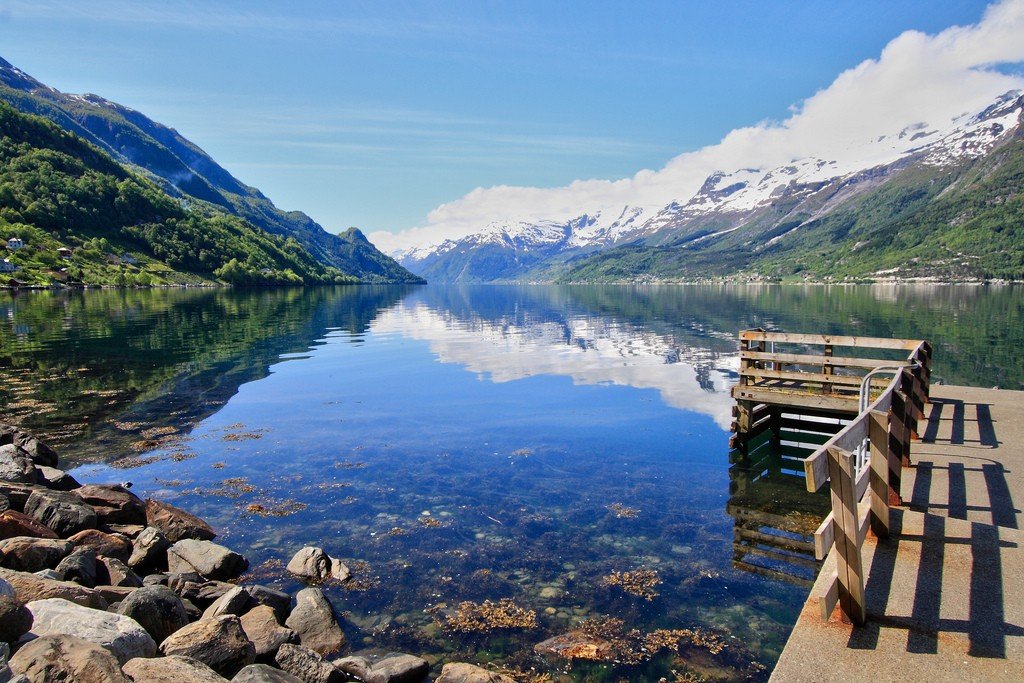
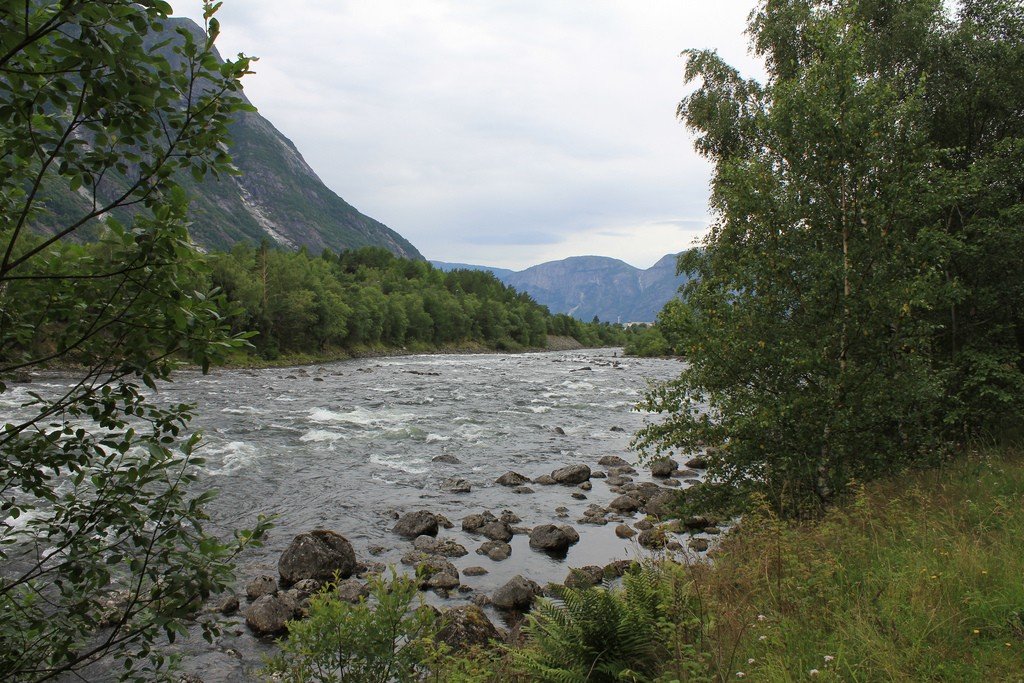
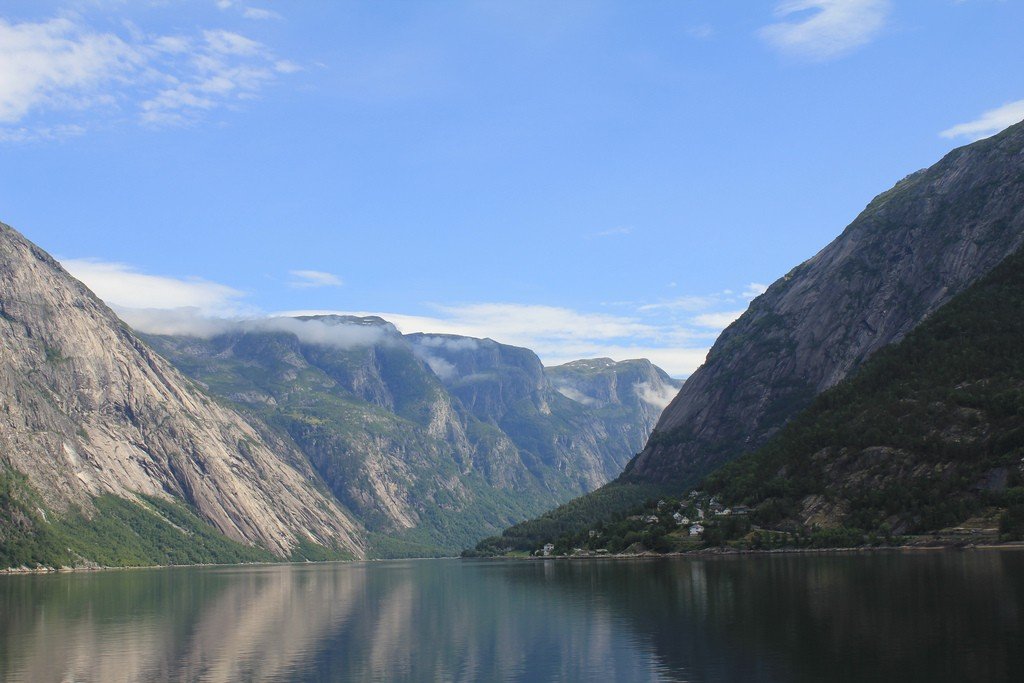
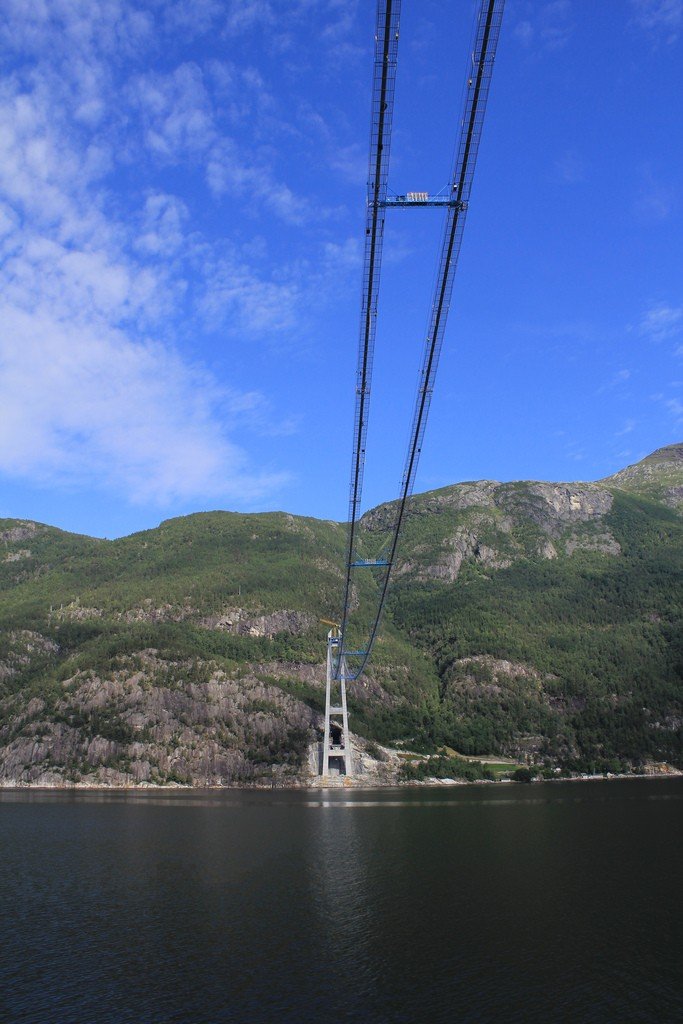
General information
When 500,000 fruit trees blossom simultaneously on the shores of Hardanger Fjord in May, there is still snow on the tops of the nearby mountains. Getting to know Hardanger Fjord, Norway’s second largest fjord, will not disappoint anyone.
.
About one-fifth of the country’s fruit trees grow on the shores of the fjord. The “culprit” of this natural phenomenon is the Gulf Stream current, which makes the climate in the valley, protected from the wind, mild and temperate. The Cistercians started horticulture here in the XIII century. And in the 19th century, the photographer Knud Knudsen, a native of Oudda (1832), took it to a new level by developing new varieties of apples, plums and cherries – after studying horticulture in Germany (in Reutlingen).
.
On the banks of the main fjord and its branches are many picturesque villages, and there are also many hydroelectric power plants and industrial plants. To the east of Eidfjord lies Hardangervidda National Park, the largest high plateau in Northern Europe. In beautiful clear weather, it all together makes a lasting impression.
.Along the shores of the Hardanger Fjord
Voss
The center of the Voss region is located just north of the fjord coast – at the intersection of E 16 and R 13. The town has a population of approximately 14,000. The post-war development of the town is not particularly interesting, but the location of Voss is truly unique: on the shore of Lake Vangs-vatn, framed by high mountains, and therefore many tourist routes start from here.
.
One of the few buildings of the town that survived the German bombing in 1940 is the Early Gothic church (1277) in the very center. In the 17th century, the late Gothic altarpiece was replaced by a Baroque one, decorated with a painting by the Bergen artist Elias Figenshaug, a pupil of Rubens. North of the station is the ethnographic open-air museum Melsterhof. Sixteen wooden buildings (XVII-XIX centuries) are exhibited here, and their architecture reflects the main trends in the architecture of the region. The exposition of the museum also tells about the life and life of the inhabitants of the fjord coast.Opening hours: daily in summer. 10.00-19.00.
The famous artist – woodcarver Magnus Dagestad (1865-1957) created a museum of his works during his lifetime.Opening hours: in summer Tues.-Fri. 11.00-15.00/17.00 (Gjernes, Helgavangen).
.Excursions
Voss is the starting and finishing point for excursions along the fjord coast: the R 13 leads to the east – through picturesque mountainous terrain with serpentine and snow-capped peaks, fantastic scenery and turbulent waterfalls. A few kilometers from the highest point of the trail (262 m) you can find the amazingly beautiful Skjervefoss waterfall.
.
Ferries
Lake Granvin lies at the northernmost tip of Hardanger Fjord; on the very shore stands a church (1720) with Norway’s oldest bell. From the lake, the R 7 goes to the Vallaviktunnel and the Bruravik ferry crossing. The crossing can also be reached from Ulvik on the shores of the Osa Fjord. The ferry to Brimnes will take you to the other side of the fjord in 10 minutes. Nowadays you can’t even believe that before, to get to Kinsarvik (Kinsarvik, 50 min.) you had to wait for hours for the ferry in Kvanndal (Kvanndal, 14 km south of Granvin). By the way, it would be nice to wrap up in Kvandal and Utne (20 min) today as well.
.Ulvik
.Before heading around the fjord, check out the spa town of Ulvik: the R 572 from Granvin Church to Osa Fjord will take you there in no time. The panoramic road leads past green meadows, small houses and… orchards. However, in some places the highway is very narrow – only for experienced drivers! But the view of Ulvik is worth it: it is surrounded by emerald hills and mountains up to 1600 meters high.Very interesting is the small, white-painted wooden church (1858) with a magnificent altar (1630) and paintings (floral ornaments) by Lars Osa (1860-1958), a native of Ulvik. And if you dare to take a seaplane flight over the fjord and glacier, you’ll get an experience of a lifetime.
.Ulvik
From Granvin, R 7 leads southwest of the fjord to the small industrial center of Alvik. A smelting plant producing ferrosilicon and ferrochrome operates here. The warm water is used in the new industry of aquaculture – artificial salmon farming – which is now booming in the region. After 12 kilometers, a narrow suspension bridge (1937) over the mouth of the Fyksesund (1937) is 30 m high and 344 m long. To the east of the bridge the road is very narrow. Warning. Traffic jams are not uncommon there in poor visibility conditions.
.Outesse
The R 7 then leads past strawberry plantations and orchards to the village of Oystese in the bay of the same name, where a museum with works by sculptor Ingebrigt Wieck (1867-1927) is open opposite the church. About one hundred and fifty sculptures of the master are presented here. And in Bergen you can see another of his works, a monument to Edvard Grieg.
.Nurheimsunn
An ideal place for a short vacation is the picturesque resort town of Norheimsund. The decoration of the town is a very beautiful small harbor. Here you can also find a wonderful hotel “Sandven Hotell”. In good weather it is not bad to go to the other side of the fjord and admire the Folgefonna glacier. At the museum shipyard you will be allowed to stand behind a real Norwegian craftsman and watch him at work.
.
In Holdhus, the wooden church is an eye-catcher, decorated on the inside with magnificent floral ornaments and friezes. The church pulpit (1570) is probably the oldest in Western Norway, made after the Reformation. On the approach to Eikelannsen, admire the Koldalsfossen waterfall..Rosendahl Castle
The R 48 highway runs through the southern end of Hardanger Fjord. At the imaginary continuation it is worth visiting Rosendal Castle (Baronie Rosendal), which can be reached by ferry from Gjermundshavn (25 min., 13 km south of Mundheim) following to Lofallstrand, or via the Folgefonntunnel tunnel (11 km) and from the south on the E 134 via Skanevik. The small Northern Renaissance castle attracts all visitors to the region. In the middle of the 19th century, a magnificent garden with an equally magnificent view of the Hardanger Fjord and the mountains with numerous waterfalls was laid out around the castle, and there is a unique rose garden. The chateau-museum offers guided tours and concerts with the use of a grand piano by the Parisian company Pleyel (“Pleyel” with double rehearsal mechanics, 1860), as well as theatrical performances in the courtyard of the chateau; art exhibitions are often held in the former wine cellar.Opening hours: July through Aug. daily, May 10.00-18.00. 10.00-18.00, May-September until 15.00.
.Not far from the castle in Kvinnherad is a church dating back to 1255, almost the oldest medieval stone church in Norway with elements of Romanesque and Gothic styles.
.Main attractions of Sør Fjord and Eid Fjord
Sørfjord
From Rosendal, the R 551 highway heads north. The terminus of the eastern shore of the Hardanger Fjord is Sunndal, here a long tunnel leads to Sørfjord, the longest of the arms of the Hardanger Fjord. To the west of Sør Fjord rises the Folgefonn Glacier, and on the eastern side, the Hardangervidda National Park spreads out on the largest mountain plateau in Europe.
.Tussedal
.A tour of the power plant in Tyssedal, on the banks of the Sør Fjord near the industrial district of Odda, takes you back in time to the early 20th century, when electricity for Tyssedal and Odda was generated by giant turbines – you can see them in the hall of one of Europe’s first high-pressure hydroelectric power plants. The Norwegian Museum of Hydroelectric Power Plants and Industry is open in the former administration building.Opening hours: June-Aug. daily. 10.00-17.00, at other times wt.-pt. 10.00-15.00.
Aha
.From Oudda, the narrow R 550 loops along the western shore of the Sør Fjord – first along the Folgefonn glacier, then among orchards to Aga (Aga, 28 km). You should stop at Agatunet, a wonderful old village protected by the state. Here you can find about forty old buildings, including a medieval smokehouse.Opening hours: daily in summer. 10.00-16.00.
Utne
.At 17 km north we find Utne, one of the most romantic villages scattered along the banks of the fjord. The view of the Hardanger Fjord alone is worth a visit – you can also get there by ferry from Kvanndal or Kinsarvik. From the deck you can see the small church of St. Cross (1895) and the white wooden hotel “Utne”, which looks more like an English castle.
.The Hardanger Folkemueum (Hardanger Folkemueum) is open next to the wharf. The exposition contains household items and handicrafts. You can also stroll through the magnificent garden, where “ancient” varieties of fruit trees are carefully cultivated.Opening hours: July-Aug. Mon-Fri. 10.00-18.00; Sat., Sun. from 12.00, other times 10.00-15.00.
.Lofthus
.If you want to explore the eastern shore of Sørfjord, take the R 13 road, which snakes through meadows and orchards. After 30 km, you’ll reach the picturesque Lofthus recreation area. To the south in Ullenewang is a unique stone church
.XIII century with medieval bells and a font. Ullenevang is also famous for the fact that 80% of all Norwegian cherries are grown here. In the Middle Ages, in Upedal, the largest farmstead in Hardanger, monks from the monastery of Ljuse (near Bergen) built a chapel and an orchard; they also built a path that goes steeply up to the Hardangervidda plateau (about 3 hours). From the top there is a unique view of the Hardanger Fjord. In the garden of the Ullensvang Hotel in Loftus, Edvard Grieg’s hütta is still carefully preserved: here he created his most famous works.
.Eide Fjord
If you want to return to the starting point of your journey, take the ferry Brimnes – Bruarvik (10 min.). Continue through the Valavik tunnel to Granvin.
.
If you want to continue exploring Sørfjord, you should drive past Kinsarvik (ferry to Utne 25 min., to Kvandall – 50 min.), past the bare rocks on the shore of the fjord and after about 40 km you will find yourself in Eide Fjord.
.Sports
Skiing
The car ferry (20 min.) to Jondal leaves from Torvikbygd (13 km south of Nurheimsuin). From there to the summer ski center Folgefonn, which is on Norway’s third largest glacier (1200 m above sea level). The ski season runs from June to October. It is possible to climb the glacier. Northwest of Voss is Bavallen, one of Norway’s best alpine ski centers. Excellent opportunities for flat skiing, biathlon and freestyle skiing (there is a cable car).
.Active recreation
Kayak, kayak, rafting, horseback riding, fjord horseback riding, fishing, skiing – detailed information at the Voss Tour Center. You can also go skydiving, paragliding, including over the glacier (Tel: 97 08 08 08 www.fonnafly.no).
.